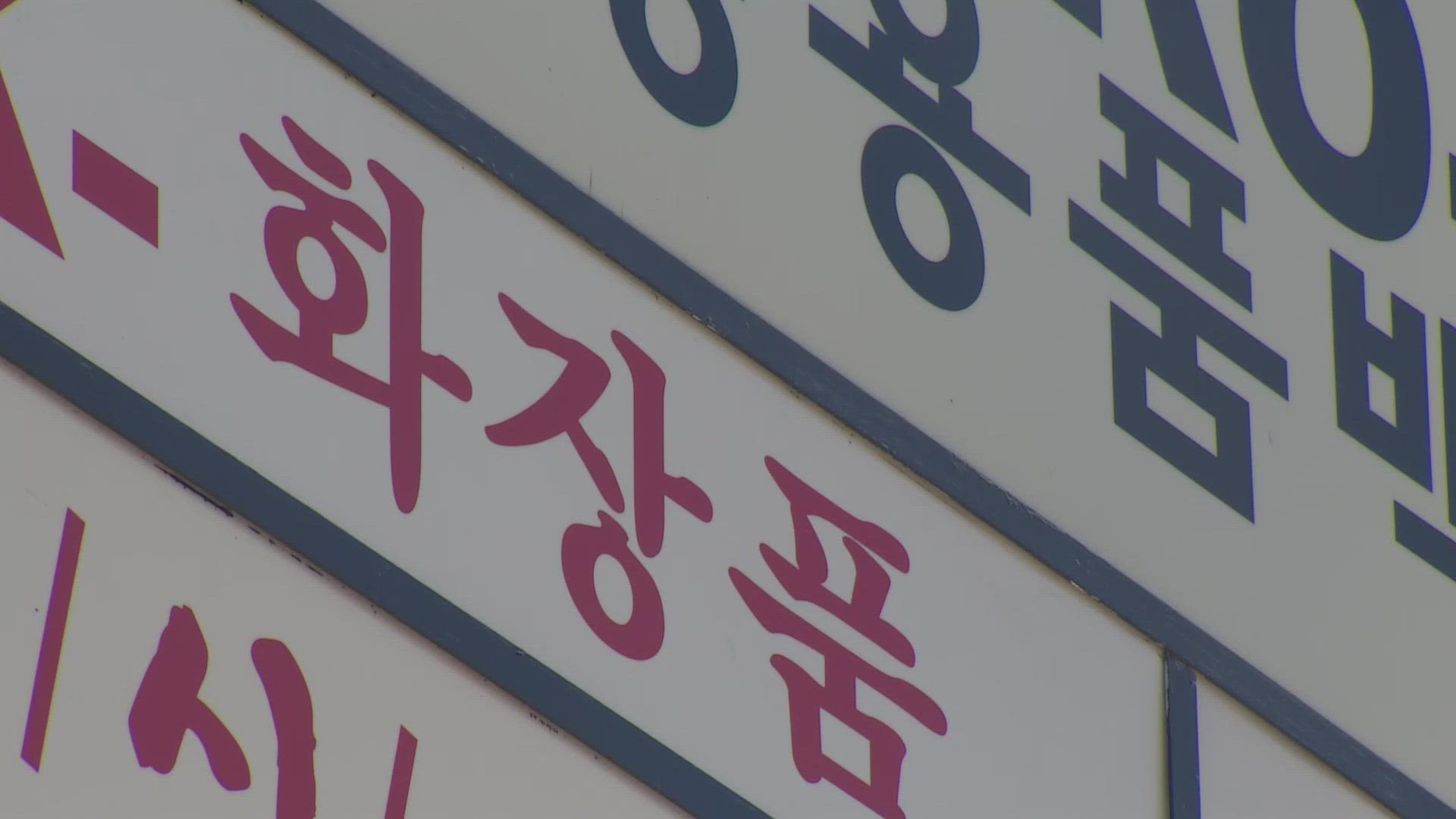DALLAS — It's the mom-and-pop shops that put Royal Lane in Northwest Dallas on the map. The neighborhood is unofficially known as Koreatown.
As of Thursday, the area is one step closer to claiming the name. In Austin, House Concurrent Resolution (HCR 39) was heard at the State Capitol by the Texas House Culture, Recreation and Tourism Committee.
State Rep. Rafael Anchia presented the resolution to designate Royal Lane between the intersections of Harry Hines Boulevard and Luna Road as Koreatown Dallas for a 10-year period.
Major Dallas Korean American leaders testified during the hearing, including John Jun with Coppell City Council, Somprathana Kongdara with Asian Texans for Justice, and Charles Park with North Texas Council of K-Elders. They brought personal stories to the room. Dallas Deputy Mayor Pro Tem Omar Narvaez also spoke.
If HCR 39 passes, it would allow for state signage and designation for cultural arts.
"It was a blighted neighborhood, and our Korean immigrant community entrepreneurs, small business owners came in and revitalized the entire area," Rep. Anchia told WFAA. "So this designation by the State, which is a 10-year designation, makes this geographic area eligible for bilingual signage, potentially on I-35 by 635, denoting it an important place in Dallas."
HCR 39 is meant to recognized the massive economic impact of this Korean district. During the hearing, it was mentioned multiple times that Koreatown Dallas generates more gross domestic product than NorthPark Mall at more than $1 billion annually.
HCR 39 also comes nearly a year after a hate-motivated shooting at a hair salon in Koreatown. The incident brought the neighborhood to the headlines, but the hope is to educate people about the history and continued significance of the area.
Young Kim, General Manager of Master Cleaning Supply in Koreatown, has worked with his parents over 20 years on the family business. He recalls the day of the shooting and said, "That's the way a lot of people heard about this being Koreatown, but now that we are finally getting the recognition, hopefully we can bring a little bit more positive news about the area."
Kim has seen the growth of Koreatown over the last 20 years. Korean immigrants opened businesses on the street, some that have been thriving for years and decades.
This neighborhood has become the largest Korean settlement in Texas with 100,000 people, and one of the largest in the country.
In January, the City of Dallas unveiled bilingual street signs in that area of Royal Lane. Neighbors hope the progress continues at the state level.
"I do think that we have an influence in this area so it's great that we are being recognized for that," said Kim.
After the hearing Thursday, HCR 39 will be voted out of the Culture, Recreation and Tourism Committee and go to the House floor to be voted on. Then, it heads to the Senate for a vote before reaching the governor. If passed at the State Capitol, the City of Dallas will need to work with the Texas Department of Transportation to begin the process of putting up state signage.
There was no opposition to the introduction of HCR 39 on Thursday.

